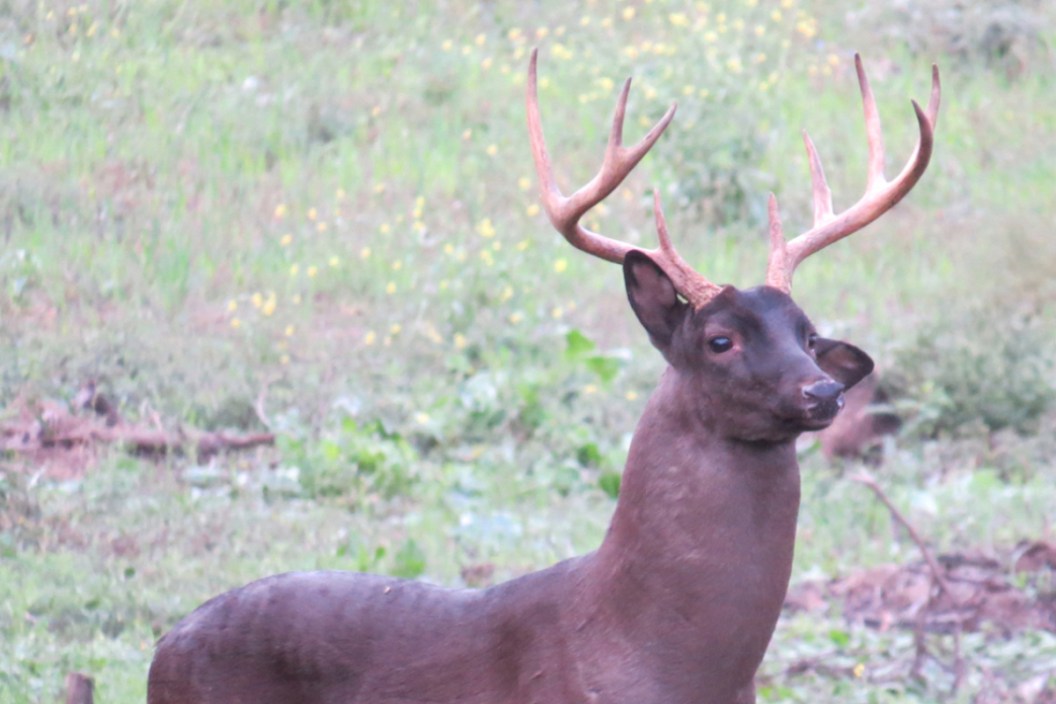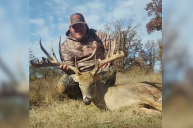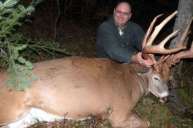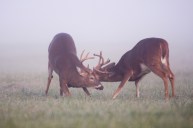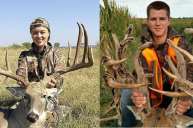This melanistic buck was a ghost for years for one Texas hunter.
A long time ago we did a story about the rarest deer color phase of all, melanistic. The story proved to be quite a hit, as many people don't seem to know about this ultra rare genetic trait.
Melanistic deer are the exact opposite of white deer that have albinism or are piebald. They have too much pigment in their hair, giving them a dark or even black appearance.
Right after the story was shared I got an unexpected phone call from Texas. I was not expecting the amazing deer story the man on the other end was about to tell me. Fortunately, he allowed us to share the story of this awesome melanistic Texas 10-pointer with the world.
"Did I just see what I think I saw?"

George Blitch was calling me from an undisclosed location in Central Texas. Coincidentally, there are eight counties in this part of the Lone Star State that have been shown to have a higher instance of melanistic deer than anywhere else in the world for reasons as of yet unknown. These counties are Guadalupe, Comal, Blanco, Caldwell, Burnet, Hays, Travis and Williamson.
No one is really certain why there are more melanistic deer in these counties than other parts of the country, but the odds are still against deer hunters ever seeing a black deer. All told, the condition has only been documented in 29 states. To give you an idea of the odds, it is said only 1 in 10,000 animals is an albino deer. Seeing a black one is probably akin to hitting the Powerball lottery.
In 2012, Blitch had heard rumors there was a melanistic buck in the area. Considering the odds, it is little wonder he never expected to see one himself. But when he took over management of the wildlife on a cattle ranch previously run by his grandfather, lo and behold, he had an encounter.
Instead of continuing the cattle business, Blitch wanted to turn the property into a whitetail paradise. The family started holding off for bucks that were five and a half years old or better. They also began working with the Texas Parks and Wildlife Department to get ideas on how to improve the ranch's habitat and food sources.
It was while he was driving around the ranch mapping out preferred browsing plants recommended by the TPWD that he had his first encounter with a buck that came to be known as "Black Beauty." The moment only lasted a few seconds, but it made an impression.
"It was unmistakably a very dark deer," Blitch said. "I thought, 'Did I just see what I think I saw?'"
Blitch's doubt only grew, because almost two years went by and there were no further sightings of the animal despite numerous game cameras on the property. "There must have been a million game cam photos and there was never a single one (of the black deer)," Blitch told me.
Then in 2014, there came confirmation the animal was still around. George and his wife Meg were driving around the property when they had another encounter that only lasted a few seconds. The encounter happened so briefly, they wondered if what they saw wasn't a deer at all, but maybe a donkey or other animal.
But they concluded the animal moved too much like a deer, and it could only be the mysterious melanistic deer that was like a ghost on the property.
The buck finally shows
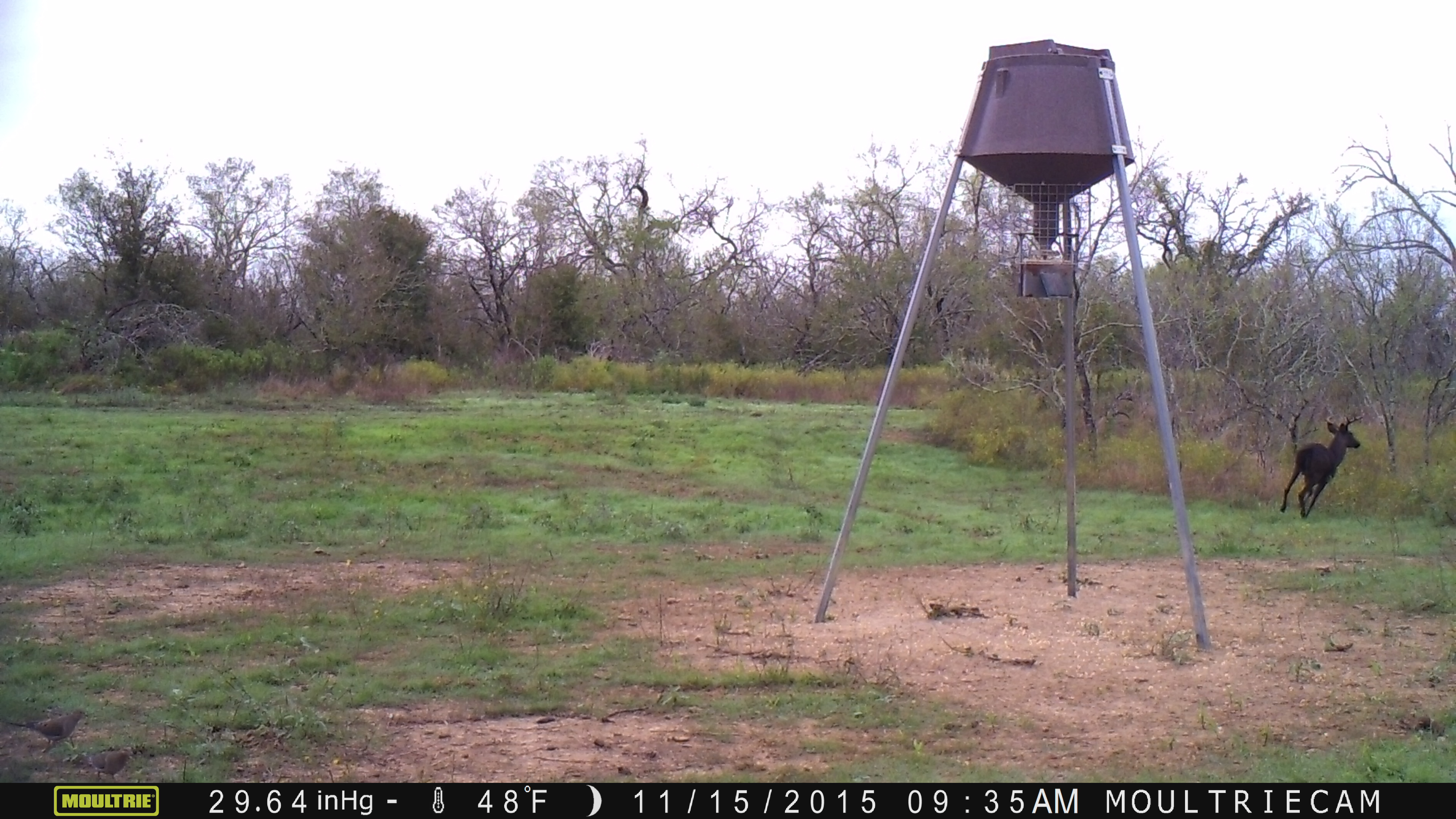
Fast forward another year to December of 2015, and Blitch said he finally got the trail camera confirmation he had been waiting for. He got three photos of the buck. They weren't great quality, and the best one was a blurry shot that showed the buck running away. But it was unmistakably a black deer. "It was like a Bigfoot photo," Blitch joked.
The photos were confirmation of the two fleeting sightings of years earlier, but Blitch and family decided to hold off on taking the buck until they could confirm it hit their preferred age restrictions. It turned out to be easy. The buck never showed again on camera or in person again in 2015.
After a while, Blitch began to wonder, like many hunters would in this circumstance, was the black whitetail already dead?
The Dark Ghost reappears
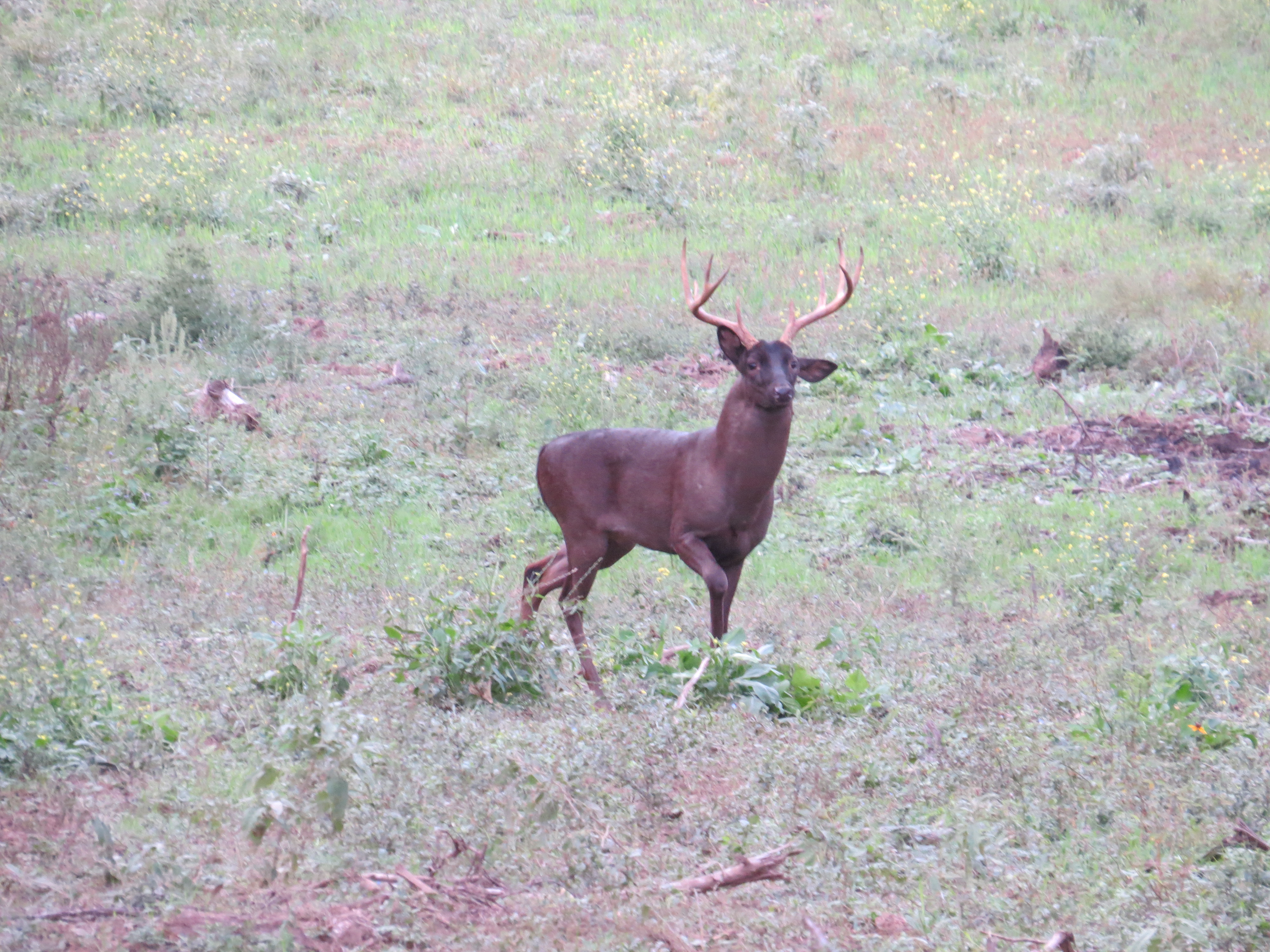
Blitch continued to work with the TPWD on improving the ranch's habitat for whitetails, and eventually began working to create new food plots on the ranch. He continued to hope Black Beauty would reappear on camera, but weeks and weeks went by with no sightings as the 2016 deer seasons started to kick in.
Again, Blitch, his family, and friends were utterly convinced the buck had either moved on from the area or was already dead. Then on November 9, everything changed.
Blitch's buddy, Jacob Spradling, excitedly called him to announce he had spotted the black whitetail and the buck was nicer than anyone thought. Jacob had spotted the buck at last light on one of their new food plots. He felt like he was at least a 10-pointer. The next day Spradling returned to the same spot and saw the buck again. This time he took some photos of it, but didn't shoot it because he felt it was "George's buck."
When Spadling sent Blitch the photos, George could hardly contain his excitement. "I was jumping around like a kid on Christmas," Blitch said.
He immediately decided to hunt the stand where Spradling had sighted the animal the following afternoon. It was November 11, Veterans Day, which was only appropriate. Blitch's grandfather was a World War II Air Force pilot, and this was his ranch the buck was hanging out on. Blitch took the day off and headed out to the stand hours earlier than normal.
Almost immediately he spotted three dark shapes. But this wasn't Black Beauty; it was three cows who had become regular unwanted trespassers on the property for the last year. Worried the buck wouldn't make an appearance with them in the field, Blitch decided to take action.
So he ran out into the field yelling to scare the bovine intruders away. But once he got back to his blind, he realized he may have made a huge mistake in leaving his scent all over the food plot. Nonetheless, Blitch was determined to see this evening's hunt through to the end. As he waited and as it got darker, his eyes began playing tricks on him. "Every shadow turned into a melanistic deer," Blitch said.
Finally, one of those shadows turned into the real deal. The buck that had eluded Blitch for so long finally stepped out. Blitch had anticipated the buck showing up at 100 or more yards out, so he had the scope's magnification dialed up. When the buck stepped out at just 33 yards, it was a problem. "All I could see was black," Blitch said. Very carefully, he dialed the magnification down and took the shot.
The buck only ran about 25 yards and piled up. Blitch had his deer of a lifetime. The black buck sported a 10-point rack of around 120 inches.
Blitch has done some digging and says he's unaware of another melanistic buck with antlers larger than this one.
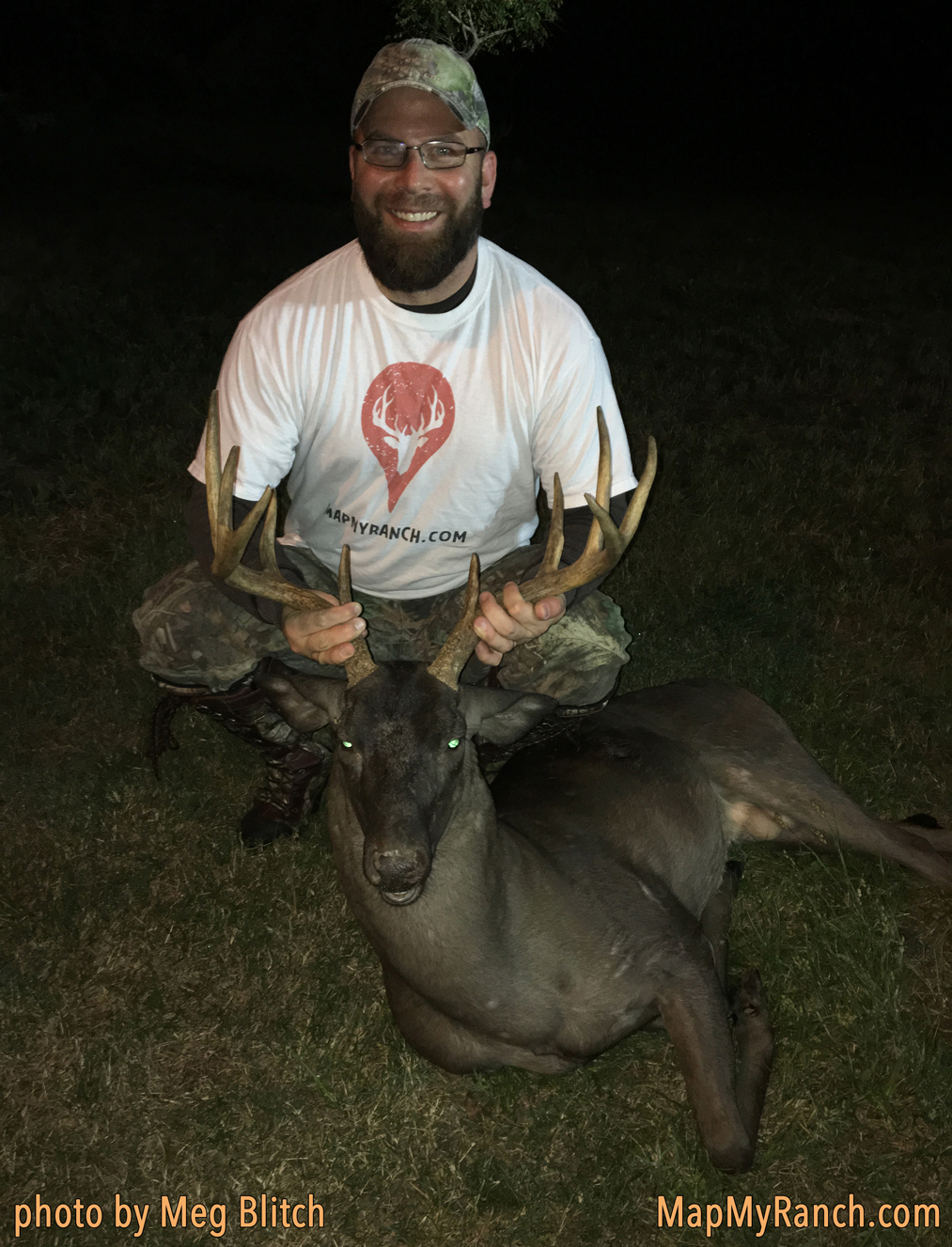
Perhaps even more astounding than the buck's beautiful dark coat was its age. Blitch and his family found the buck's teeth were quite worn and indicated the animal was at least 7.5 years old. Blitch said he didn't think the buck would have survived another season. One of the interesting things about this kind of genetic mutation is it is believed to be one of the few that is said to give a survival advantage. That definitely seemed to be the case here.
The aftermath

Blitch elected to have a head and shoulder mount done. He said he wasn't even thinking about a full body mount at the time. He still saved the buck's hide, and says he has no regrets.
Quite often the shooting of an albino or piebald buck brings a lot of attention, both positive and negative. Blitch is one of the fortunate ones. "There wasn't a whole lot of flack," he said. Instead, the taking of this buck has been something of a springboard for educating others about these rare whitetails.
He has spent some time working with the Quality Deer Management Association and other groups since his harvest to raise awareness about melanism in whitetails among the public. He hopes it will help scientists to understand more about these rare whitetails.
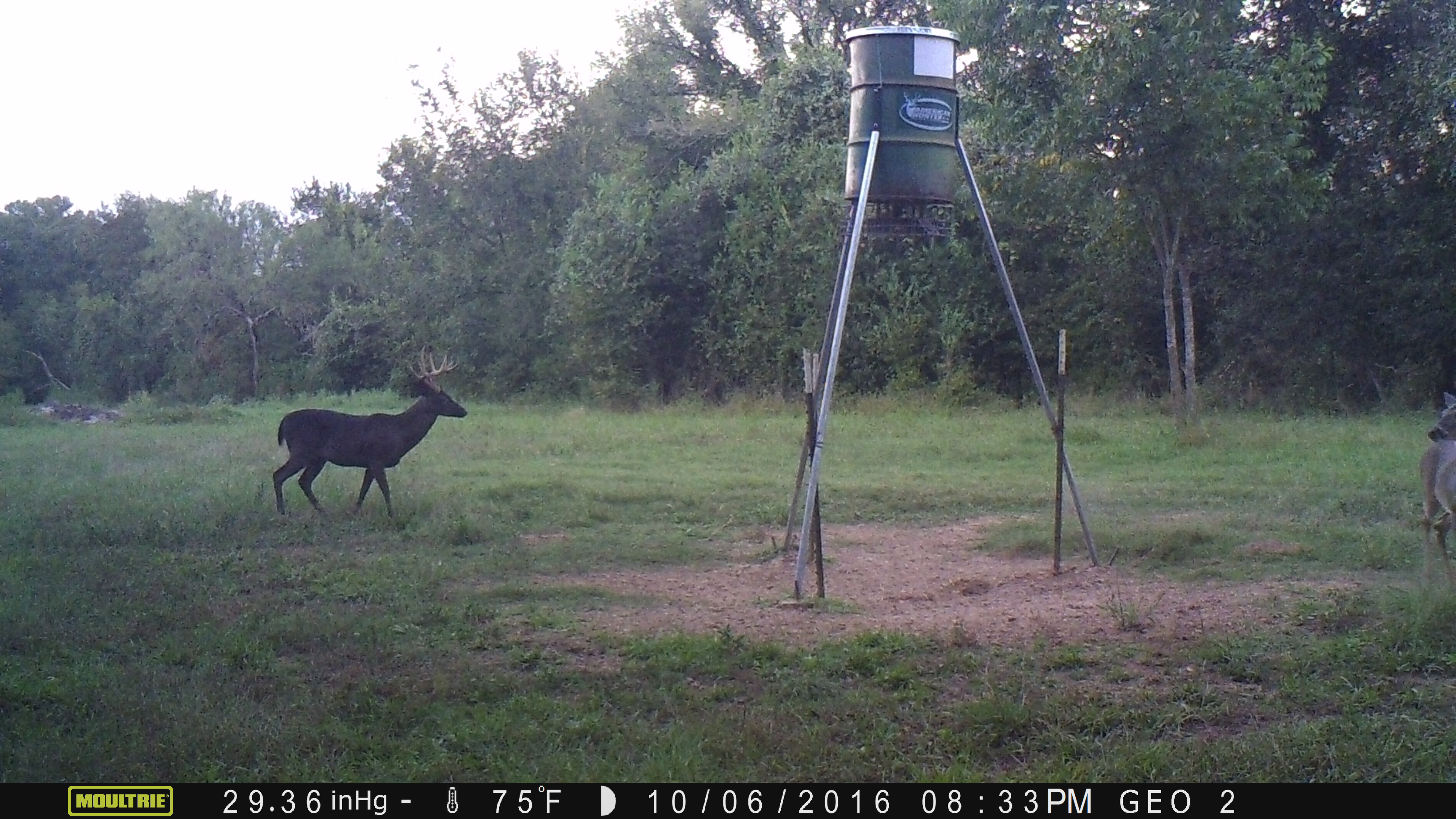
Interestingly enough, after harvesting the buck, Blitch checked his trail cameras. He learned he finally captured some clear photos of the deer taken about a month before his harvest. This buck was a ghost of the forest no longer.
We want to thank George Blitch for taking the time to share his amazing deer story with us. Congratulations again on an awesome animal, and kudos for using it to help and inform others.
Products featured on Wide Open Spaces are independently selected by our editors. However, when you buy something through our links, we may earn a commission.
For more outdoor content from Travis Smola, be sure to follow him on Twitter and check out his Geocaching and Outdoors with Travis YouTube channels.
NEXT: SHOULD WE SHOOT ALBINO AND PIEBALD DEER?
WATCH
